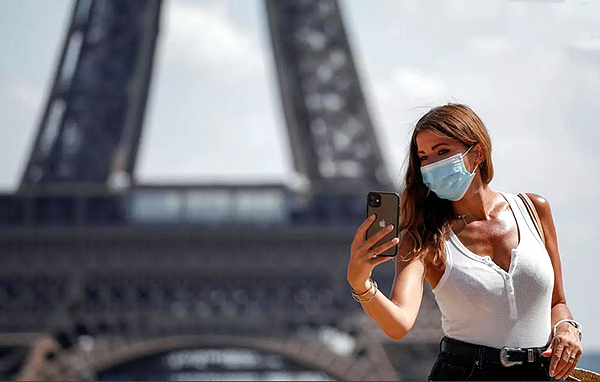 Here’s what yesterday’s CDC mask-wearing recommendation changes means for travelers:
Here’s what yesterday’s CDC mask-wearing recommendation changes means for travelers:
For the foreseeable future if you travel most anywhere you’ll be significantly changing the way you traveled before: Mask wearing, social distancing and many other pandemic protection characteristics will now become the status quo when traveling, perhaps for years to come.
Yesterday America’s CDC reversed its recommendations that had relaxed the need for vaccinated persons to wear masks.
“Wear a mask indoors in public if you are in an area of substantial or high transmission,” and then by referring to a CDC map of America’s counties, you can determine if where you live or where you plan to travel to has a level of virus that requires wearing a mask.
The CDC breaks community transmission into four categories: “Low” is blue, “Moderate” is yellow; “Orange” is substantial and “Red” is high. The CDC recommendation applies to all places with an Orange or Red designation.
No such reliable map exists for any other part of the world. However, by tediously correlating the raw statistics (number of cases, test positivity) between countries it is possible to map CDC’s map onto a foreign place.
What you’ll find is that most western countries like Canada, Britain and most of Europe are far more cautious than America’s CDC, and that mask-wearing as an example is more often recommended abroad than here.
Moreover pandemic precaution mandates are often laws in many places, such as France and South Africa, and violating them risks a fine or even imprisonment regardless that you’re a visitor.
The CDC reversed its recommendation on mask-wearing because the original recommendations excluded the transmissibility of the newly dominant Delta variant. It was excluded because science takes time. In the intervening six weeks enough science was compiled to convince the CDC that the Delta variant was significantly more transmissible than any other of the virus’ forms.
“The science didn’t change, the virus did,” Anthony Fauci told numerous news channels yesterday.
An impatient America is hardly the arena in which to argue this. But it is the science and it includes notable details that the virus load carried in the nose of even some vaccinated persons is enough to spread the virus.
And for travelers it presages a world where some form of some virus will always be a significant threat.
This is particularly disturbing the younger you may be. But for those of us with a long experience of travel we easily recall the days of the 70s and 80s when we raised our bandanas over our noses to enter a remote village, when we showed proof of numerous current vaccinations just to get into Kenya or Tanzania, when I as a guide reminded everyone to wash their hands constantly (or use sanitizers) and be cautious about what they ate or drank.
Only bottled drinks, including water.
Good companies like EWT used only the camps and lodges that not only proved higher than standard sanitation practices, but whose kitchens were scrupulously managed. Add to that today, whose staff is vaccinated.
And itineraries did change often after someone had paid to go on a certain program.
If ebola, meningitis, hepatitis, typhoid or yellow fever outbreaks encroached on an itinerary, the itinerary changed. I even remember changing an itinerary in the early 2000s because of a polio outbreak in northern Kenya.
So while yesterday’s CDC recommendations gave many travelers pause, I think the time has come for all travelers to recognize that this is likely the new normal.
If you want to travel it will be more difficult than in the recent past. Waiting another year or two or five is probably not going to release you from this fact.
The new normal has arrived and frankly, for those of us who know so well the value, excitement, inspiration and even relaxation that good travel provides, it’s not so bad. Consider the alternative.